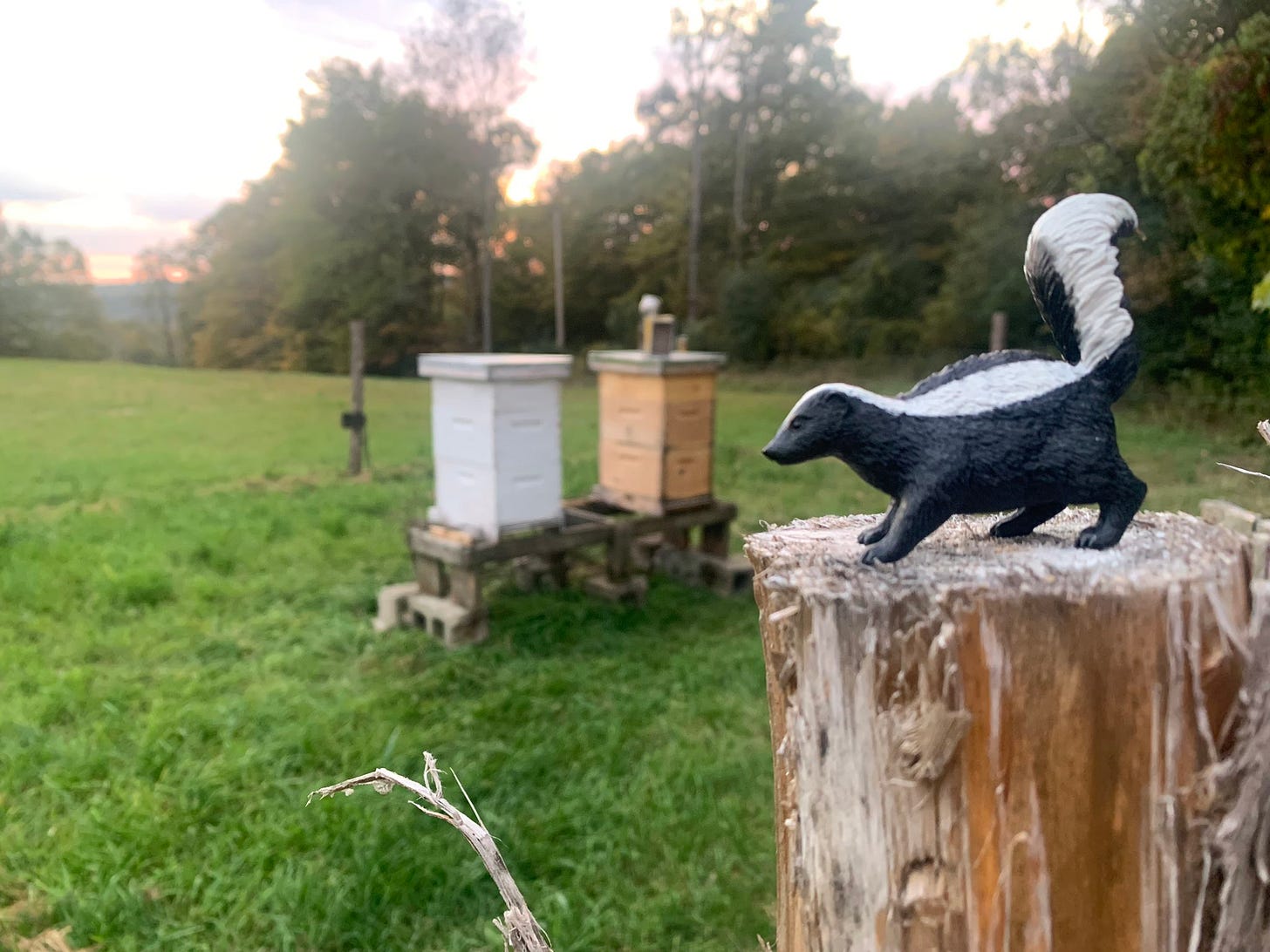Beekeepers will tell you about the problems of mites, the ravages of bears, the threat of winter’s chill. Few, however, will alert you to the most insidious threat of all: fat little skunks with big appetites. They do not want the honey. They do not want the wax. Skunks slink into bee yards, sniff out the hives, cozy up to the bees’ landing boards and then they do something very curious; they begin tapping on the hive. They take their clever little claws and gently rap near the entrance like a demure solicitor knocking on a front door. It would be charming if their intent was not so murderous. Bees are protective, vigilant, and unfortunately very gullible. As the skunk gently taps on the front of the hive, a sentry bee will come out to investigate. Then? Crunch. Tap, tap. Crunch. Tap, tap. Crunch. Tap, tap. Crunch. All night long.
Skunks eat bees. A lot of bees. A single skunk will sit in front of a bee hive tapping, luring, and crunching until it devours a tenth of the colony in a single night. Considering that a newly established hive likely contains ~10,000 bees, this is a shocking feat. What’s worse is that if a skunk manages to hang out and eat a couple thousand bees in a night, the remaining colony will have a difficult time surviving even if they have the rest of the season to recover; losing a quarter of your populace before winter spells doom. Skunks have a thick coat of coarse fur that bees can’t wiggle into to get a good sting in and no one really knows how skunks tolerate the stings to the inside of their mouths. Perhaps they just enjoy spicy fare? Whatever the case may be, they are an insidious problem. A bear will dramatically destroy a hive in an instant. A skunk however will only leave a muddy little puddle where its fat rump rested all night while it engaged in its grim feast. Many novice beekeepers won’t even notice until one day they inspect their hive and assume the colony flew away.
This, for me, is hard won knowledge learned in battle. In September, just as the bees were fanning their honey cells to remove moisture and make the final touches for the honey we would harvest in mere weeks, I noticed the grass around the front of my hives was matted down and the pest identification boards used to track mite activity had been slipped out the back and nibbled on by something. I was perplexed. The spots in front of the hives looked like deer bedding but dirtier. Had a doe left her fawn to sleep in front of my hives? Had a dog come sniffing around in the dead of night? Raccoon? I put out a game camera to figure out what was happening. When I downloaded the video the next morning, I was shocked and actually horrified by what I witnessed:
The fattest skunk I had ever seen eating my bees. A skunk so fat he was spherical. An orb. An evil orb who openly mocked our borders and our sovereignty. Truly a gluttonous, demonic grotesque horror sent from the deepest pits of Hell with the sole mission to ruin our honey harvest and mock not only me but my ancestors and decedents! We called him Beach Ball. Beach Ball. Foil, thief, nemesis. Oh, how I loathe his corpulence still! Just writing his name sickens me. He is the Grendel to my Beowulf, the grim horror who stalks through the night to bring carnage and ruin to something wholly good. Evil incarnate! As the video finished, I knew what I had to do.
Here is the story of my fight against the greatest enemy I have ever known…
Keep reading with a 7-day free trial
Subscribe to Echoes from an Old Hollow Tree to keep reading this post and get 7 days of free access to the full post archives.




